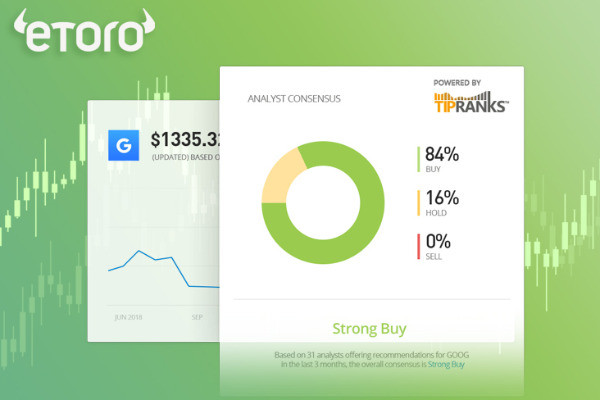While traditional lending served as financial support for small businesses, crypto lending targets digital market traders who wish to grow their crypto values.

Financial lending has a major part in the industry. A lot of small businesses thrive because they are able to apply for a loan. In the past, there is only one option when it came to applying for a business loan, which is the local bank.
Nowadays, business owners have hundreds of alternative lenders to support their business with more agreeable terms. People can borrow not only fiat money but also digital currency through a crypto lending platform.
But which one is better? Traditional lending or crypto lending?
Traditional lending and crypto lending serve different purposes. It's really hard to choose which one is better. If a small business is looking for a way to fund its company, then traditional lending would be a logical choice; although they need to provide good credit in order to apply, not to mention they need to provide assets as collateral.
Meanwhile, crypto lending is a better choice for crypto traders who want to grow their crypto funds without selling them. It can be inexpensive and fast and doesn't require a credit check most of the time. Both lendings have their own risk and benefit, it's all up to the borrowers which one benefits them most.
Get to Know Traditional Lending
Traditional lending refers to a type of financing provided by traditional banks and lenders like a credit union. This is by far one of the most common forms of debt financing used by small and mid-sized companies.
Traditionally, an intermediary facilitates the entire process of lending. It can be a bank or other credit union. They will set a percentage of bank deposits as credit for the clients.
This will be added in addition to the amount of money they pay. For example, if they lend $6000 with a 2% annual percentage rate to be paid within the course of 12 months, they need to pay $510 each month or $6120 in total.
Usually, banks or credit unions have a certain standard of what kind of clients they choose to lend to. After all, they want to make sure the clients can pay back with interest.
Therefore, they most likely pick a client of business with proven track records. Traditional loans can be used for various purposes such as startup, construction, business acquisition, cash flow, payroll, and many more.
Advantages of Traditional Lending
Traditional lending through local banks has been around for a very long time. It's considered safe, low-risk, and reliable. It also offers lower interest rates and longer repayment periods between 3 to 10 years.
For a small business, using community-based lenders have more advantages. These lenders offer flexible financing packages and repayment schedules. They also have higher-risk tolerance in lending which works great for small businesses.
Disadvantages of Traditional Lending
Lending from a traditional bank requires collateral, which is an asset or group of the asset. It can be a vehicle or property from which the bank can claim if you default on your loan. This can be difficult for a new business to provide.
Bank also does not offer business assistance services that will allow you to grow your business. No to mention the process of applying for a loan with a bank can be extensive and sometimes require a persuasive business proposal.
Although there are alternative lendings that can solve these issues, the loan fees can be very costly and it won't benefit small businesses.
Understanding Crypto Lending
The basic of crypto lending is not so different compare to traditional lending. But, instead of using fiat currencies, crypto lending involves the use of cryptocurrency.
These assets are more transparent and pseudonymous compare to regular currency due to the blockchain technology they run in. Cryptocurrency isn't directly controlled by any sovereign nation, therefore it won't be affected by economic turmoils.
A crypto lending uses digital currency as collateral; it's really not that different compare to a mortgage loan or auto loan. The client will pledge their crypto assets to obtain the loan and pay it off over time.
While the borrowers retain the ownership of the crypto used as collateral, they will also lose some right to trade or make transactions. If the value drops significantly, they will end up owning more than what they borrowed.
When Did It Start?
Crypto lending start to take off in 2020, during the beginning of the pandemic where the economies came to a screeching halt. During this time, a lot of people were looking for other ways to make their assets work for them.
That's when people start to confide in crypto loans and saw it as an easy way to gain access to fiat currencies almost immediately. Cryptocurrency is very volatile, so the loans are almost always overcollateralized.
This works as insurance for the lender should the price of crypto dropped. However, this can impact the borrowers negatively.
See Also:
Where To Get a Crypto Loan?
While traditional lending is available at the local bank, crypto lending is a different story. There are two ways a borrower can get a crypto loan, from a centralized exchange and a decentralized lending platform.
1. Centralized Exchange
A centralized exchange typically has protocols to ensure that your collateral is safe. Some centralized exchanges protect the majority of crypto assets via insurance or keep the digital assets in cold storages away from internet connection to protect it from cyber theft.
A centralized crypto platform will record all the deposits and withdrawals using blockchain technology that serves as a way to earn interest in other cryptocurrencies. Centralized ecosystems have to follow certain rules and procedures.
For example, clients should create an account by signing up and completing KYC procedures to prevent money laundering and fraud. As a result, there are more paper works involved within a centralized exchange platform. But, this is a regulated environment with a customer service representative, so the client's safety is protected.
Some example of crypto lending centralized exchange is Binance and BlockFi. Binance offers loans to users who want to borrow stablecoins like BUSD or USDT. They take BTC, ETH, BNB, as well as other crypto-assets as loan collateral.
The initial LTV is 65%, the margin call is set at 75%, and liquidation LTV is at 83%. Loan terms are 7, 14, 30, 90, and 180 days, and interest is calculated hourly. BlockFi has higher requirements compare to Binance.
For example, the minimum loan amount is USD $10,000, while LTV is at 50% and margin calls sit at 70%.
2. Decentralized P2P Lending Platform
Transactions in a completely decentralized lending platform are handled by codes instead of people. DeFi (Decentralized Finance) lending platform is completely transparent, so anyone can access the protocols here.
Since it has no middleman or financial regulators, clients don't have to go through a verification process like KYC. Because of that, crypto lending through this platform is faster.
Clients can also apply for a loan of any size without having to confirm their identity to a third party.
The Benefit of Crypto Lending
There are some benefits when it comes to using crypto lending:
- They mostly offer low-interest rates albeit not as cheap as a mortgage. It's possible to get a crypto loan with an interest rate below 10 percent.
- Crypto lending is a great option for anyone in need of instant funding; once you're approved you can get the loan funds in a matter of hours.
- Crypto lending doesn't always run a credit check, making it a promising financing option for people with poor credit history.
Risk of Crypto Lending
Although there are some benefits from crypto lending, there are some downsides to pay attention to:
- Crypto lending is subjected to margin calls, which occur when the value of collateral assets drops below a certain threshold. In this case, the lender requires borrowers to increase holdings in order to maintain the loan.
- During lending, borrowers can't access their holdings to trade, so this can be a problem if the price drops significantly.
- Interest account withdrawals can be slow since they could take several days.
If you are looking for the best cryptocurrencies for investment, the rule of thumb is actually quite the same as choosing stocks or other similar assets. Hence, you should look for coins with potential futures whose prices are still undervalued.

 Dedicated FREE FOREX VPS
Dedicated FREE FOREX VPS Free FOREX Virtual Private Server
Free FOREX Virtual Private Server MT4 Demo Contest, Get $500
MT4 Demo Contest, Get $500 Sign Up for an Account, Claim 60% Deposit Bonus
Sign Up for an Account, Claim 60% Deposit Bonus Free MT4/MT5 VPS 2024
Free MT4/MT5 VPS 2024 Send E-mail and Get Free Merchandise
Send E-mail and Get Free Merchandise $1K Refer a Friend Bonus for Pepperstone Pro clients
$1K Refer a Friend Bonus for Pepperstone Pro clients Maximize Your Earnings with 100% Deposit bonus
Maximize Your Earnings with 100% Deposit bonus Trade to Win, $5,000 Monthly Demo Contest
Trade to Win, $5,000 Monthly Demo Contest Claim 30% + 15% Deposit Bonus from LiteFinance
Claim 30% + 15% Deposit Bonus from LiteFinance











